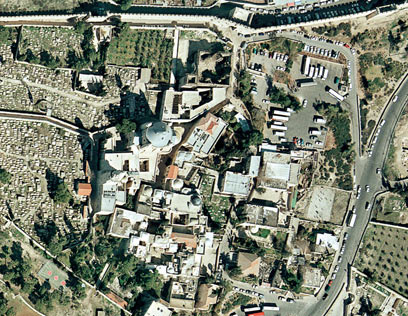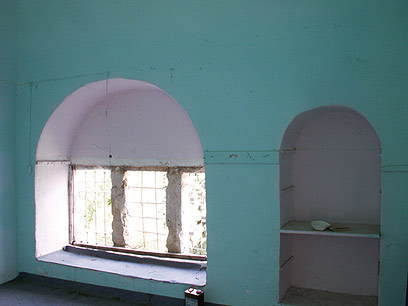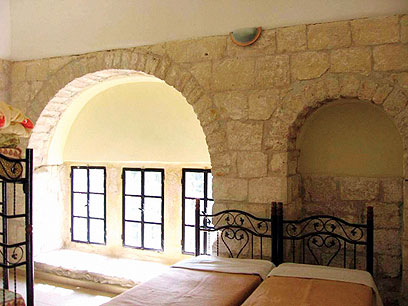
Ever since the Six Day War, a number of bodies have been active at the site of King David's Tomb in Jerusalem – the Diaspora Yeshiva is in charge of most of the structures around the main building, the Ministry of Religious Services manages the room of Zion – the tomb and the entrance rooms, and the Interior Ministry maintains the Last Supper Room and the adjacent rooms.
Smaller bodies such as the Sephardic Yeshiva and private citizens and associations, as well as Christian bodies including Vatican representatives in Israel, also show interest in the site.
The complex fell under many different rulers throughout the years, including the Christians, Muslims and Ottomans. The site was captured by the Palmach's Harel Brigade in the War of Independence, and became an important base on the front line that cut the city in two until the Six Day War.
Archaeological bodies (now known as the Israel Antiquities Authority) began operating at the site immediately after the establishment of the State of Israel, as a solution to the problem of damage caused to the antiquities.
The authority would mainly carry out specific archaeological works for infrastructure purposes, but did not aim to carry out overall renovations or maintenance.

David's Tomb compound (Photos courtesy of Antiquities Authority)
In 2007, the authority learned that the Diaspora Yeshiva was performing construction works south of the tomb's courtyard, which could have led to the collapse of the structure's southern wing.
Construction was halted, and the yeshiva was ordered to submit blueprints offering a solution to the problem before resuming construction. This move was the first step in creating a pattern of planning and coordination to maintain the site together with the Antiquities Authority.
The two-story complex contains a series of small rooms arranged around an open courtyard.

One of the rooms before renovation
Works being carried out on the walls of the structures were also halted. Work was only resumed after the property holders submitted the required blueprints. The works were performed by a contractor with experience in preservation and infrastructure, who renovated and installed toilets in the rooms. The rooms are now used as guest rooms.

Room after renovation
Following the success of these two projects, the Jerusalem Development Authority decided to merge the development and preservation of the complex with the government's Old City project.
This enabled the complex to be viewed as a single unit for the first time, both with regards to the study of the site from a historical and archaeological aspect, and with regards to the physical and practical aspect of maintaining and preserving the site.
Pilot plans were then drawn up for the renovation and preservation of the compound's main courtyard, including the corridor at the northern entrance.

Hall before renovation
Before the project was launched, the 1,290 square foot courtyard was in a dire condition – poor infrastructure under the flooring, lack of an upper drainage system, poor electric and telephone infrastructure, improvised stone benches and more.
The site was completely renovated. Reinforcements were placed, the walls were cleaned painted and plastered, banisters were installed, the site was made accessible for the handicapped, stone benches were built, and more.

Hall after renovation
Further renovation, which was not included in the original pilot, was done ahead of the visit of Pope Benedict XVI last year, initiated by the Jerusalem Development Authority. These works focused on the large hall east of the main courtyard and the public toilet that was installed near the hall several years ago.
Comprehensive work was also carried out on the Last Supper Room ahead of the pope's visit. Due to drainage problems on the roof of the structure, rainwater seeped into the building and the interior plaster began to peal. Lacking proper maintenance, some of the engraved texts on the walls disappeared, and the pillars in the area were covered with layers of dirt. Therefore, a great chunk of the work was dedicated to sealing off the northwestern part of the structure's roof.
The Jerusalem Development Authority also plans to reinstall signposts all over the complex to make getting around easier.
After the completion of the pilot works, plans were launched to preserve and restore the rest of the areas in the complex, including the room of Zion, the tomb and the rooms leading up to David's Tomb, the walkway and the room east of the walkway used as a space to light candles in. Plans to renovate the hall toilets and roof are also in motion.
Shachar Poni, Israel Antiquities Authority
The article was published in the December edition of Teva Hadvarim magazine















